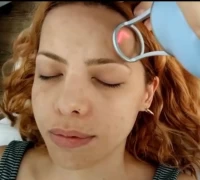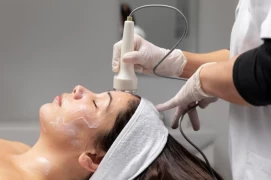
New Approach in Skin Rejuvenation: HIFU Technology
- New Approach in Skin Rejuvenation: HIFU Technology
- What are the Fundamental Principles of HIFU Technology?
- What are the Advantages of HIFU Technology?
- What are the Applications of HIFU Technology in Dermatology?
In today's world, technological advancements in the field of aesthetics provide new and effective options for individuals seeking to mitigate the effects of aging and maintain a youthful and healthy appearance. In this context, HIFU (High-Intensity Focused Ultrasound) technology has gained significant prominence in the realm of non-surgical facelifts in recent years. HIFU technology is an innovative approach used to enhance skin tightness and stimulate collagen production without the need for laser beams or surgical interventions. In this article, we will explore the effects and principles of HIFU technology on non-surgical facelifts.
What are the Fundamental Principles of HIFU Technology?
HIFU (High-Intensity Focused Ultrasound) technology involves the use of focused ultrasound waves. The fundamental principle is to focus high-intensity ultrasound waves onto tissues beneath the skin. These waves have the ability to penetrate deep tissues without affecting the surface of the skin. As a result, controlled thermal damage is induced in the deeper layers of the skin, promoting skin tightening and collagen production.
What are the Advantages of HIFU Technology?
- Non-Surgical Approach: HIFU technology does not require surgical intervention. This eliminates concerns such as surgical risks, recovery period, and exposure to anesthesia, allowing individuals to tighten their skin without these worries.
- Long-Lasting Results: The results of HIFU treatment become evident over time and typically continue to improve in the first few months. These results are generally long-lasting and contribute to maintaining skin tightness and a youthful appearance.
- Rapid Recovery Process: Patients can resume their daily activities immediately after HIFU treatment. Side effects such as mild redness on the skin are usually temporary and minor.
- Personalized Treatment Plans: HIFU technology supports personalized treatment plans due to its ability to focus on tissues at different depths. This enables the treatment to be tailored to the patient's needs and skin type.
- Non-Surgical Facelift: One of the most well-known and commonly used applications of HIFU technology is in non-surgical facelift treatments. Ultrasound waves focused on deep tissues promote skin tightening and collagen production. This can reduce fine lines, wrinkles, and sagging, and redefine facial contours. Effective outcomes can also be achieved in areas such as the neck and jawline.

What are the Applications of HIFU Technology in Dermatology?
HIFU technology presents an innovative approach with various applications in the field of dermatology. By affecting tissues beneath the skin using focused ultrasound waves, this technology can be used to treat or improve various skin problems. Here are the main areas of application for HIFU technology in dermatology:
- Skin Tightening: HIFU technology can be employed not only for the face but also for other areas of the body to achieve skin tightening. It can be effective in reducing sagging in regions like the abdomen, arms, and legs.
- Acne Scar Treatment: Acne scars are a common issue that can leave permanent marks on the skin. HIFU technology can be used to diminish scars and improve the texture of the skin. Increased collagen production beneath the skin due to ultrasound waves can help enhance the appearance of scars.
- Pigmentation Treatment: Pigmentation issues can lead to uneven skin tone. HIFU technology can reduce the appearance of pigmentation by affecting melanin pigments beneath the skin. This offers a solution for problems like sunspots, age spots, or birthmarks.
- Eye Area Aesthetics: The eye area is one of the most affected by the signs of aging. HIFU technology can be utilized to reduce under-eye bags and dark circles, prevent eyelid sagging, and rejuvenate the overall eye area.
- Body Contouring: HIFU technology can also be employed in body contouring treatments. It can be used to target unwanted fat deposits and shape body contours effectively.
- Scar Treatment: Skin scars can persist after trauma or surgery. HIFU technology can reduce the visibility of scars and enhance the overall smoothness of the skin.
- Improvement of Skin Tone and Texture: HIFU technology can be used to improve overall skin tone and texture. It can help smoothen the skin surface, tighten pores, and balance skin color.
HIFU technology offers a wide range of applications in dermatology, providing individuals with non-surgical and minimally invasive solutions. However, as with any medical procedure, HIFU treatment should be assessed and performed by a skilled dermatologist.




